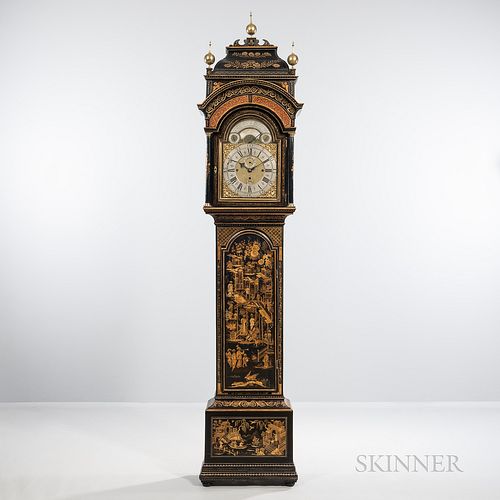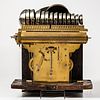Japanned Quarter-striking Musical Longcase Clock by Joseph Eayre
Lot 1234
About Seller
Bonhams Skinner
274 Cedar Hill Street
Marlborough, MA 01752
United States
Founded over four decades ago, Bonhams Skinner offers more than 60 auctions annually. Bonhams Skinner auctions reach an international audience and showcase the unique, rare, and beautiful in dozens of categories, including the fine and decorative arts, jewelry, modern design, musical instruments, sc...Read more
About Auction
Catalog Only
By Bonhams Skinner
Apr 20, 2021 - Apr 29, 2021
Set Reminder
2021-04-20 12:00:00
2021-04-29 19:00:00
America/New_York
Bidsquare
Bidsquare : Clocks, Watches & Scientific Instruments
https://www.bidsquare.com/auctions/skinner/clocks-watches-scientific-instruments-6805
This auction features exciting fresh-to-the-market vintage and contemporary wristwatches, American clocks, Scientific Instruments, a live steam model of a Boston and Albany “402” locomotive, luxury pens and lighters, and the private collection from the Camera Craftsman store and workshop of Boston. Bonhams Skinner bidsquare@bonhamsskinner.com
This auction features exciting fresh-to-the-market vintage and contemporary wristwatches, American clocks, Scientific Instruments, a live steam model of a Boston and Albany “402” locomotive, luxury pens and lighters, and the private collection from the Camera Craftsman store and workshop of Boston. Bonhams Skinner bidsquare@bonhamsskinner.com
- Lot Description
Japanned Quarter-striking Musical Longcase Clock by Joseph Eayre, St. Neots, England, c. 1765, three original brass finials atop the oak case black and gilt japanned decoration on waist door, base, and sides, engaged columns flanking the hood door, tombstone-shaped waist door, base plinth with two-stage base molding and low bun feet, 13-in. composite brass dial with finely matted center and recessed date ring, silvered components including a roman numeral chapter ring with quarter-hour marks, seconds bit, subsidiary dials for "Chime-Not Chime" and "Strike-Quarter Silent-Silent," ten-tune selection arch listing The 113 Psalm, The Recruiting Officer, A Minuet by Mr. Handel, Britain Strike Home, and others, recessed name boss marked "Joseph Eayre St. Neots" framed with floral and herringbone engraving, brass spandrels and blued-steel hands, three-train, seven-pillar movement with recoil escapement, rack and snail hour- and quarter-hour strike on two bells, a nest of fourteen bells and twenty-eight hammers mounted above the 13 1/4-in. pinned cylinder, all regulated by a pendulum and powered by three cast iron weights, ht. 104 in.
Literature: Movement described and pictured in Keeping Time, Musical Clocks of Early America 1730-1830 exhibition catalog, Gary R. Sullivan & Kate Van Winkle Keller.
Note: For information on Joseph Eayre see T.M.N. Owen, Church Bells of Huntingdonshire, 1899, pp. 100 and 120, and John Milburn, "Some Horological Extracts from Stukeley's Diaries," Antiquarian Horological Society, Vol. 6, No. 4, 1969, pp. 206-11.Condition
Condition: Japanned decoration restored, caddy top replaced from the crown molding up, bun feet possible old replacements, movement complete but needs cleaning and adjustments as striking and musical functions are sluggish. Pendulum rod and bob are probably old replacements, weights are period cast iron.
Any condition statement is given as a courtesy to a client, is only an opinion and should not be treated as a statement of fact. Skinner Inc. shall have no responsibility for any error or omission. The absence of a condition statement does not imply that the lot is in perfect condition or completely free from wear and tear, imperfections or the effects of aging. - Shipping Info
-
Please visit http://www.skinnerinc.com/services/payment-and-shipping/ for information regarding the collection of items purchased at auction.
-
- Buyer's Premium



 EUR
EUR CAD
CAD AUD
AUD GBP
GBP MXN
MXN HKD
HKD CNY
CNY MYR
MYR SEK
SEK SGD
SGD CHF
CHF THB
THB

















































